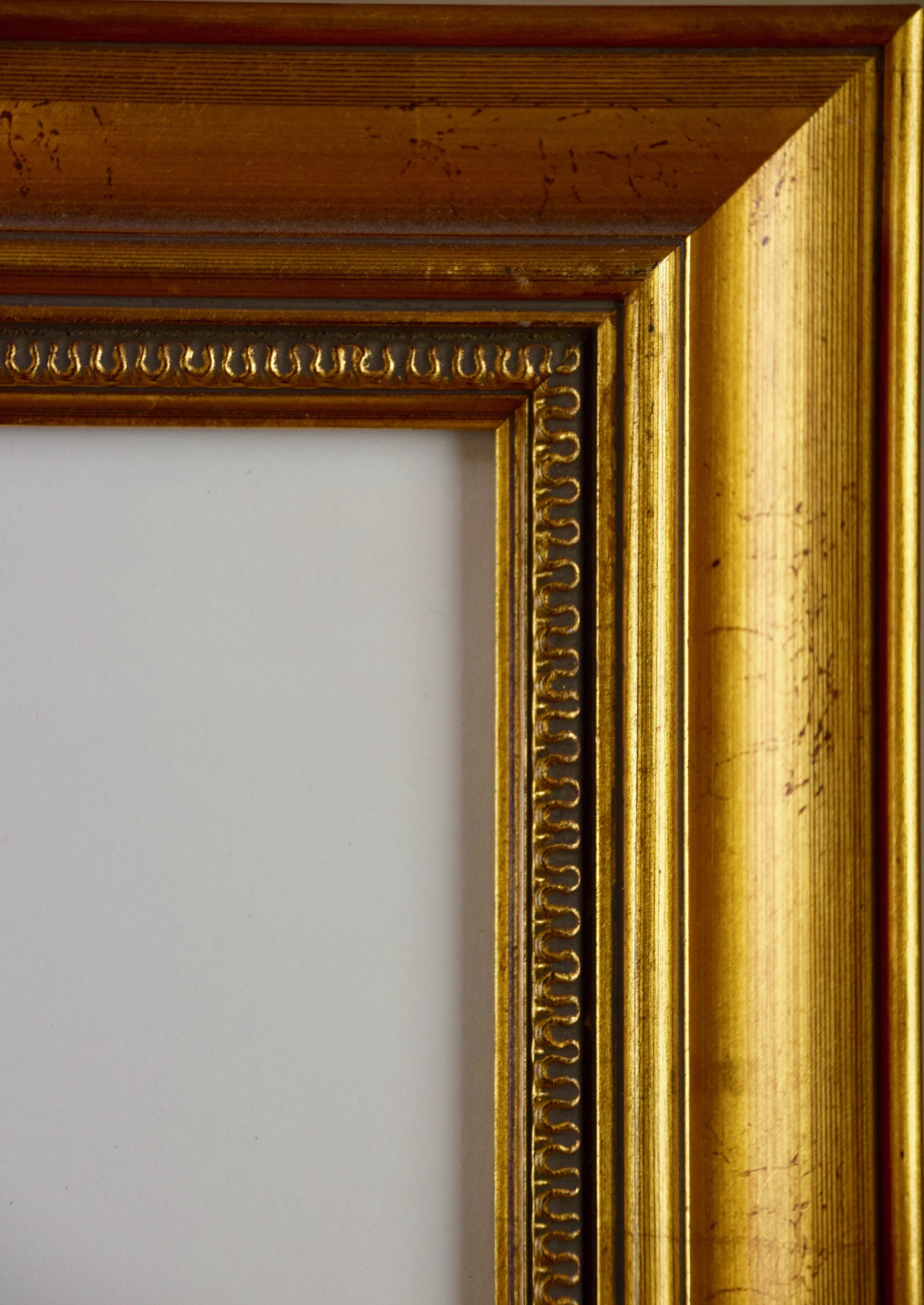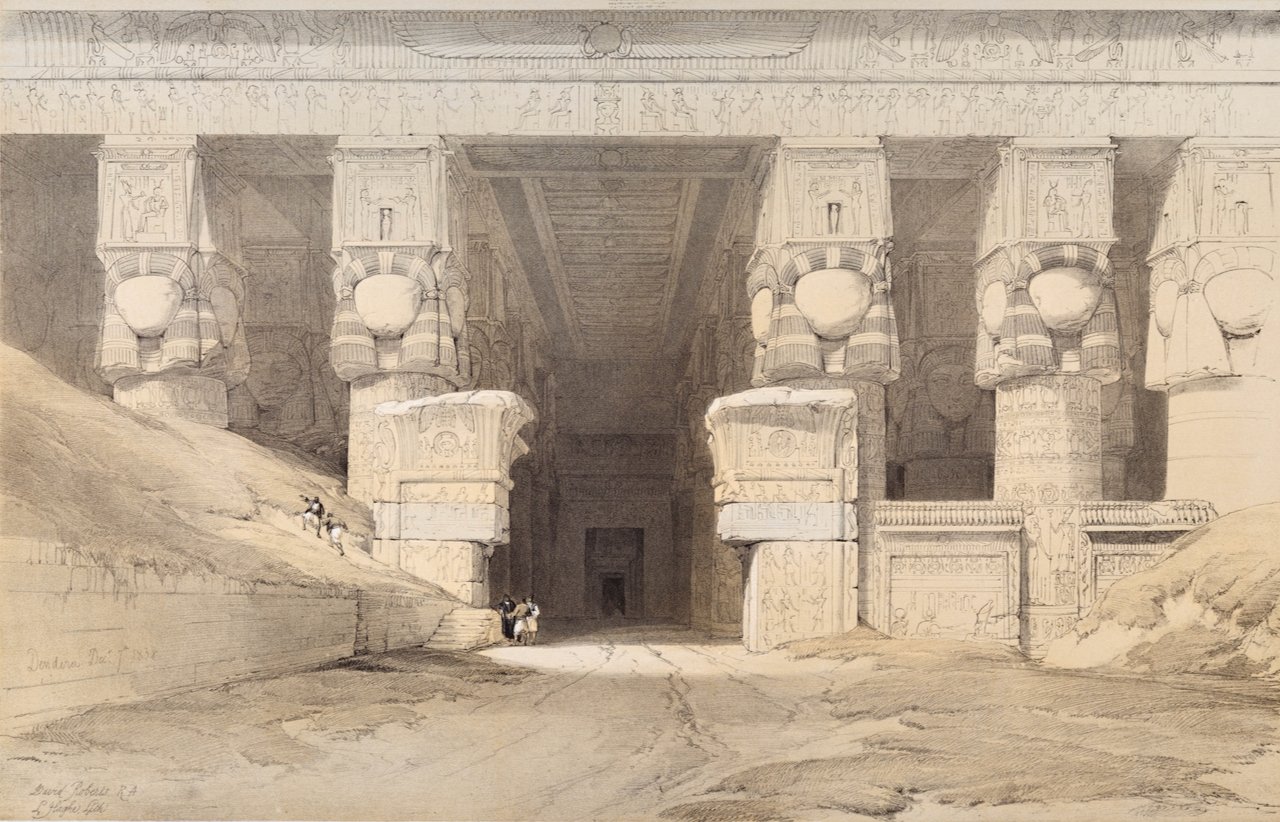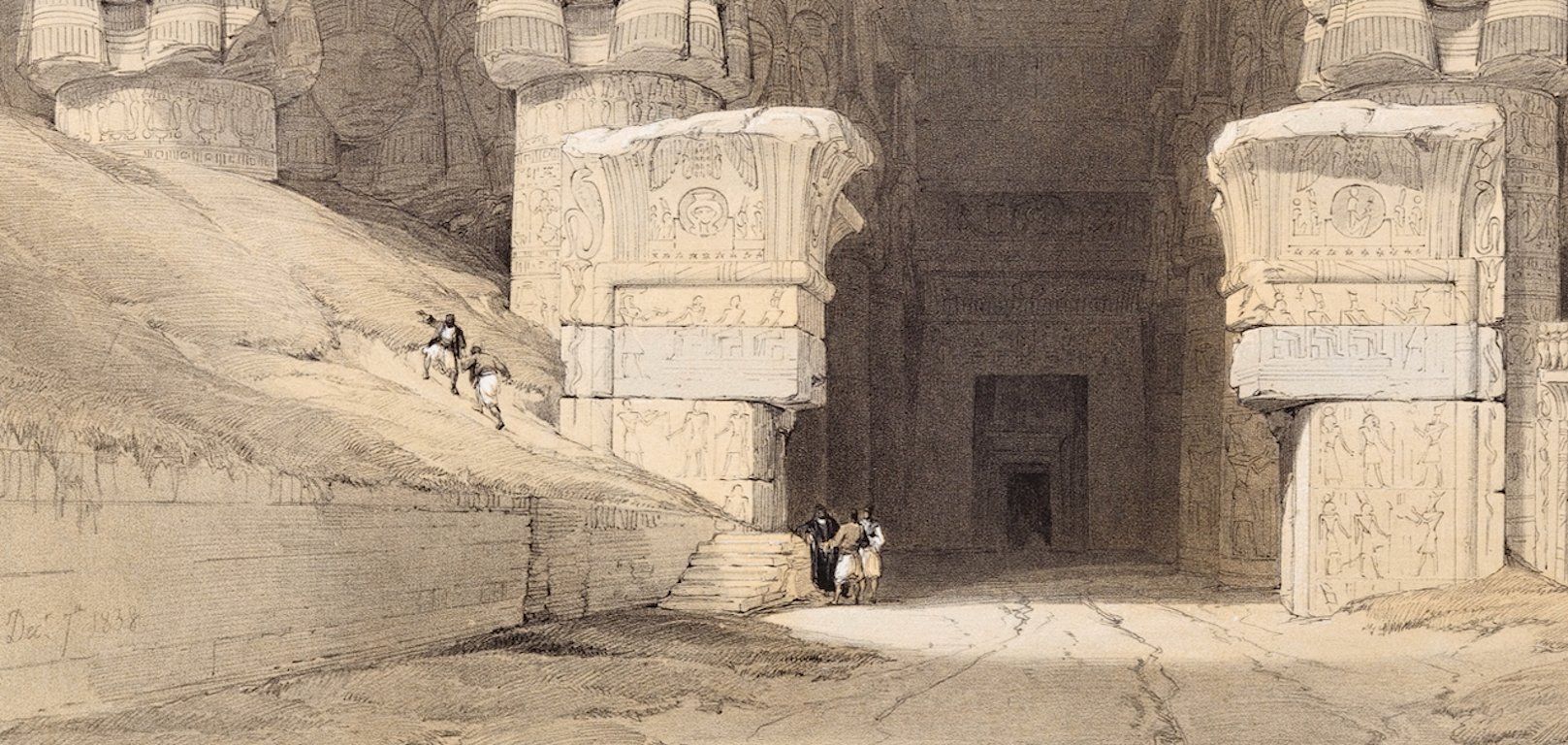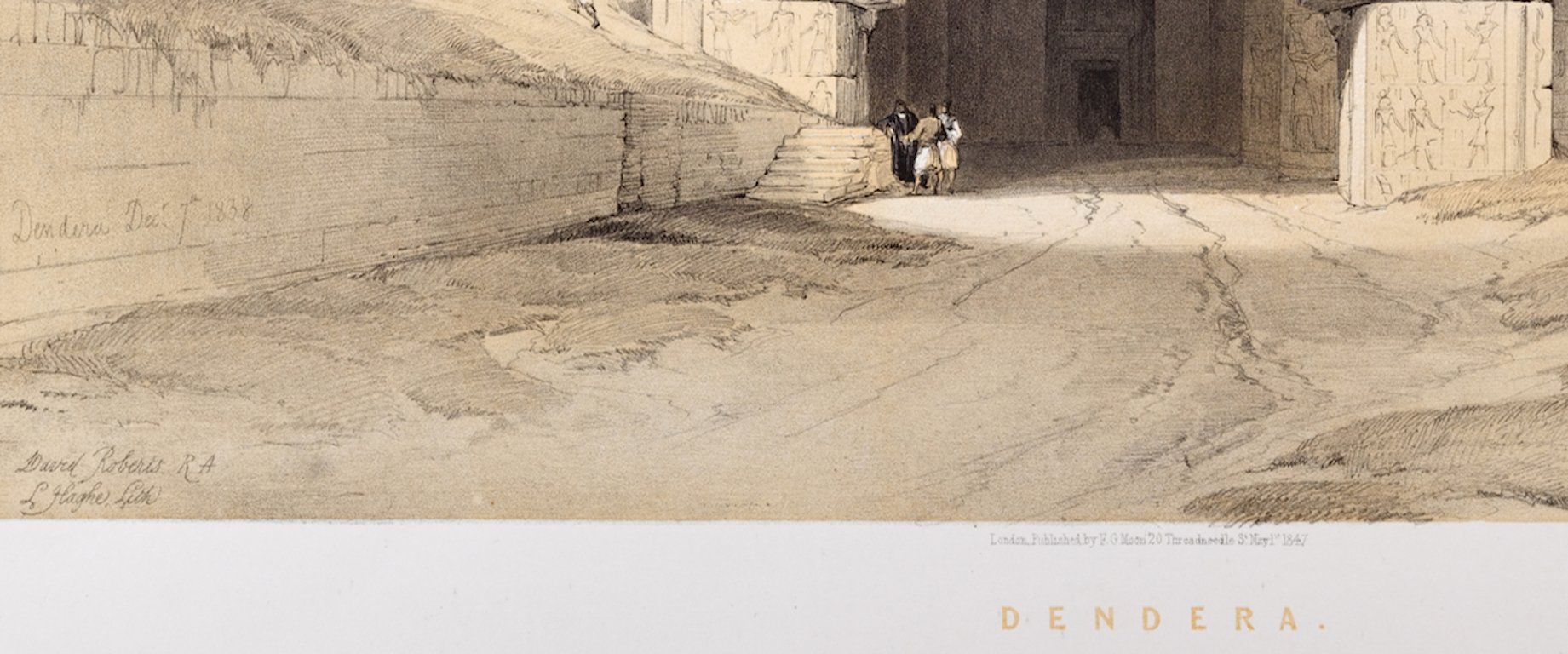 Image 1 of 4
Image 1 of 4

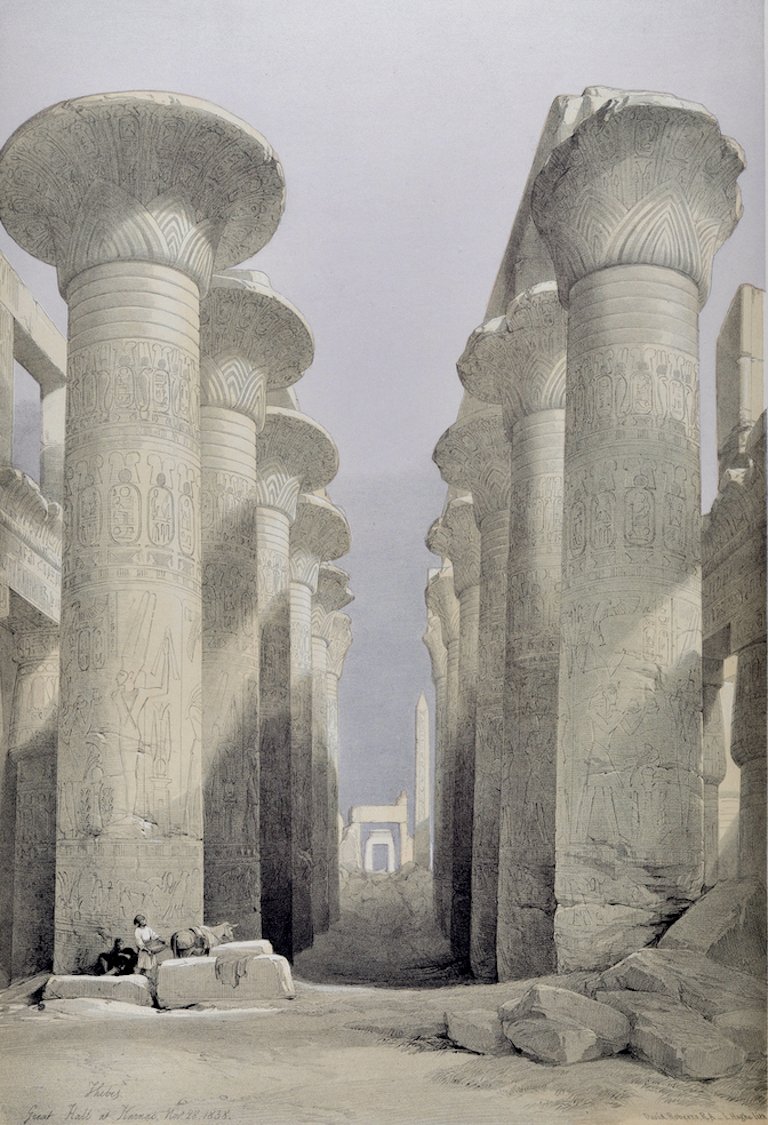 Image 2 of 4
Image 2 of 4

 Image 3 of 4
Image 3 of 4

 Image 4 of 4
Image 4 of 4





The Great Hall at Karnak, Luxor, Egypt: A 19th C. Lithograph by David Roberts
This is an original 19th century duotone lithograph entitled "Great Hall at Karnac, Thebes" by David Roberts, from his Egypt and Nubia volumes of the large folio edition, published in London by F. G. Moon in 1849. The lithographs were prepared by Louis Haghe (1806-1885) from drawings and paintings by Roberts. The resultant large folio editions of 'The Holy Land' and 'Egypt & Nubia' are considered the greatest lithographically illustrated works issued in the 19th century.
Creator: David Roberts (1796-1864, British)
Creation Year: 1849
Dimensions: Height: 23.88 in (60.66 cm) Width: 16.75 in (42.55 cm)
Medium: Lithograph
Condition: See description below.
Reference #: 5328
This is an original 19th century duotone lithograph entitled "Great Hall at Karnac, Thebes" by David Roberts, from his Egypt and Nubia volumes of the large folio edition, published in London by F. G. Moon in 1849. The lithographs were prepared by Louis Haghe (1806-1885) from drawings and paintings by Roberts. The resultant large folio editions of 'The Holy Land' and 'Egypt & Nubia' are considered the greatest lithographically illustrated works issued in the 19th century.
Creator: David Roberts (1796-1864, British)
Creation Year: 1849
Dimensions: Height: 23.88 in (60.66 cm) Width: 16.75 in (42.55 cm)
Medium: Lithograph
Condition: See description below.
Reference #: 5328
This is an original 19th century duotone lithograph entitled "Great Hall at Karnac, Thebes" by David Roberts, from his Egypt and Nubia volumes of the large folio edition, published in London by F. G. Moon in 1849. The lithographs were prepared by Louis Haghe (1806-1885) from drawings and paintings by Roberts. The resultant large folio editions of 'The Holy Land' and 'Egypt & Nubia' are considered the greatest lithographically illustrated works issued in the 19th century.
Creator: David Roberts (1796-1864, British)
Creation Year: 1849
Dimensions: Height: 23.88 in (60.66 cm) Width: 16.75 in (42.55 cm)
Medium: Lithograph
Condition: See description below.
Reference #: 5328
The print depicts a view of the imposing columns of the Great Hall of the Temple of Karnak (the modern-day spelling) in Thebes, Egypt (modern-day Luxor). A man and his donkey stand near the base of a column in the foreground. A woman sits behind them The figures give perspective of the immense size of the structure. The title and date of Roberts' visit (November 28, 1839) appear in the plate in the lower left, written in Roberts' on hand on his original drawing and transferred to the lithograph.
The Great Hypostyle Hall is at the center of Karnak. It was initially created by the Nineteenth Dynasty pharaoh Sety I, who reigned from approximately 1291-1279 BCE. Karnak was the largest religious sanctuary in Thebes (modern Luxor), Egypt's imperial capital at the time. It was built as a tribute to the god Amun-Re, who was at the top of the Egyptian pantheon of gods. Sety I’s craftsmen embellished the walls and columns in the north half of the building with exquisite bas relief sculptures of the highest quality before the king’s death. This lithograph depicts the magnificence of the artwork on the columns in the foreground. Sety’s successor, the famous pharaoh Ramesses II, who ruled from approximately 1279 to 1213 BCE, had his artists carve the walls and columns in the hall's south portion with scenes in relief during his reign. Other pharaohs added to the extensive decorations of the great hall, which depict what life and religious beliefs were like during ancient Egypt's celebrated New Kingdom era. The New Kingdom of Egypt (c. 1550–1070 BCE) was ruled by the 18th, 19th, and 20th Dynasties of pharaohs. During this time Egypt achieved its greatest military power and cultural influence, as well as its most extensive territorial expansion. Other famous New Kingdom pharaohs include Hatshepsut, Akhenaten, Thutmose III, and Tutankhamun.
This duotone lithograph is printed on wove paper with wide margins. The sheet measures 23.88" high and 16.75" wide. There is faint toning adjacent to the edges of the sheet, as well as a barely perceptible vertical crease in the left margin. A short tear at the edge of the lower margin on the left has been professionally stabilized on the verso. All of these issues would be obscured by a mat when framed. The image portion of the print is in excellent condition.
The drawings and watercolours from Roberts' tour of the Holy Land and Egypt were collated together into folios and released over a seven year period by the publisher F.G. Moon from 20 Threadneedle Street London. This lithograph is from the Royal Subscription Edition (1842-1849) with only 500 copies produced per depiction. Louis Haghe (the Belgian engraver and friend of Roberts) worked on all of the lithographs for this series.
David Roberts (1796-1864) was born outside of Edinburgh, Scotland. At age 10 he became a house painter’s apprentice. He continued painting houses and eventually theater scenes in Edinburgh and then in London. His friend, J. M. W. Turner, recognized his artistic talent and encouraged him to become a full-time artist.
In 1839 Roberts traveled to Egypt and then in 1840, through the Holy Land, concluding in Jerusalem. Upon his return to England, F. G. Moon agreed to publish lithographs created by Louis Haghe from Robert’s sketches and watercolors. This publication was highly acclaimed and very popular for its esthetic quality, its historical and topographical accuracy, and Robert’s dramatic depiction of his scenes. Queen Victoria and Charles Dickens were among the subscribers who collected his works. Roberts' and Haghe’s duotone lithographs, often colored, remain extremely sought-after today and have been rising steadily in value.





